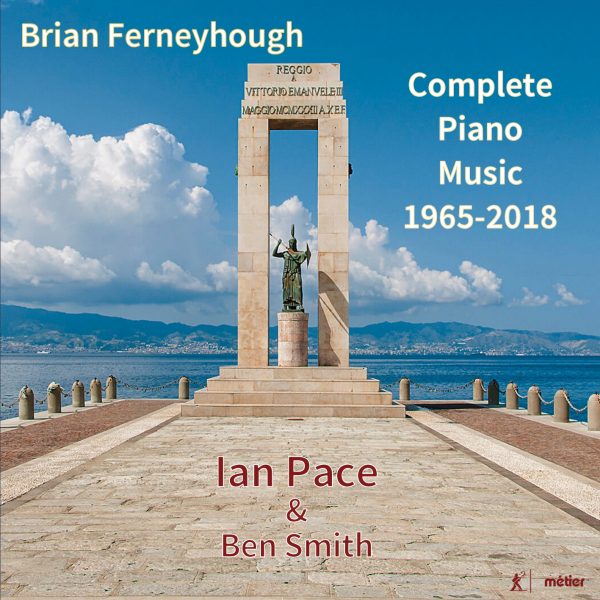American Record Guide
Brian Ferneyhough (b. 1943) is sometimes described as a proponent of New Complexity – for good reason. His music is intricate, ultramodern, and nigh impenetrable. It is dominated by atonality, processes, and dense, concentrated ideas that evolve seemingly of their own accord. Most of all, it is highly virtuosic – so much so that when performers are actually able to surmount – or at least manage – the challenges of his music, it is a thing of consequence.
This valuable release of his complete piano music (from 1965-2018) is brought to us by lan Pace, a specialist in this kind of music. In fact, Ferneyhough’s music has been a strong presence in his repertory for 30 years – lending these performances considerable authority. In less capable (and musical) hands, these demanding pieces would come off as dry, academic, and merely impressive. Here they are arresting: they undulate, hum, blaze, and explode with life. He seems to be on the exact wavelength that is needed to put this music across.
Ferneyhough’s scores are notoriously dense with detail, down to the most minute expressions and intensely specific rhythms. A glance at the opening pages of Lemma-Icon-Epigram(1981) shows a dizzying array of undectuplets, nested tuplet groups, ever-shifting meters, and a sea of articulation marks. This is one of his more transparent scores, if you can believe it. Much has been said about his notational density—where does this level of specificity leave the artist to make musical decisions? In an essay in the notes (that is no less dense than the composer’s music and own descriptions), Pace argues that, in fact, the opposite is the case. It’s not that Ferneyhough expects rote perfection; rather, he hopes that in such an approach to notation, the performer will avoid habitual patterns suggested by conventional notation and will make selective, musically sound decisions in the practical realization of the work. In other words, the work transcends the notated page and is found in the performer’s interpretation. I found this essay enlightening – it helped me to start to understand this challenging music.
The early works ‘Invention’ (1965) and ‘Epigrams’ (1966) are “autodidactic projects…which consciously set out to formulate and resolve specific issues of musical technique and form” In the latter, one movement is a miniature set of variations, while another explores palindromic form. Pace is joined by Ben Smith for the 2-Piano Sonata, also from 1966. The piece engages with the developmental procedures and strong contrasts of the previous pieces on a larger, more discursive scale. Each of the Three Pieces(1966/67) has a strongly defined personality by way of their processes; I’m reminded of Carter here.
Lemma-Icon-Epigram (1981) follows over a decade of absence from the solo piano genre. As mentioned earlier, this is more approachable and exciting for the listener – but with its thundering, agitated passages, it is considerably more demanding for the performer. Nearly two decades follow before the fiendish Opus Contra Naturam(2000), commissioned by Pace and found in Shadowtime(2004), Ferneyhough’s opera project on the 1940 wartime death of Jewish philosopher Walter Benjamin. It is highly surreal and theatrical – the pianist must perform in front of a silent film projection while scatting with the music. Sudden, isolated major triads are surprising and effective.
The remaining works are from the last decade. Quirl(2011-13) is an extended study of fractal rhythms, calculated to test the performer’s limits.’ El Rey de Calabria’ (2018) was written in memory of the composer’s long-lived cat, Trifolio. It is a departure from the post-serial style of his previous works, more in line with classical Schoenbergian serialism.
This release has had a long gestation: most of the pieces were recorded in 2003, except for the 2-Piano Sonata and the two most recent works, which were recorded from 2018 to 2020. Pace’s outstanding technique and musicianship are consistent. There are discernible differences in sound, but that is inconsequential.
This is an important album – it should be of obvious interest to scholars, but also to people looking for a way into this difficult music. Excellent performances and notes will help the astute and curious listener to accustom the ear to the music of this highly individual composer.
@divineartrecordingsgroup
A First Inversion Company
Registered Office:
176-178 Pontefract Road, Cudworth, Barnsley S72 8BE
+44 1226 596703
Fort Worth, TX 76110
+1.682.233.4978












